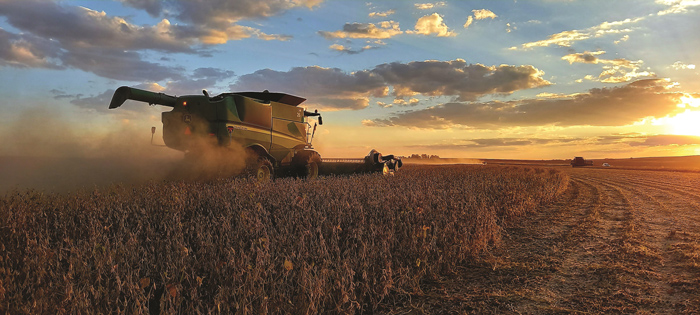
School of Economics; Agricultural Economics, North-West University
How does one determine the value of rental land? This is one of the most common questions asked in the agriculture sector today. There is not just one answer to this question either. Usually, the rental price is calculated as a percentage of the market value of the land. The problem here becomes how to determine this percentage value.
Factors that determine value
Some aspects to keep under consideration when setting rental prices include the geographical location of the land. Location is one of the most important factors when determining the value of rental land. Location plays a major role in the desirability of the land and can have a significant impact on the price of the land. The size of the land and the soil quality are also important variables. Distance influences the price the lessee/renter is willing to pay. As an example, a neighbour will be willing to pay a premium due to the lower transaction cost compared to someone further away.
Supply and demand factors also play an important role in the market value of the land. As market prices increase, the demand for rental land also increases, with supply declining due to a number of reasons, mainly driven by climate change and the declining availability of water resources.
Another aspect to consider is the infrastructure outlay of the property, an already existing capital outlay is usually a positive attribute for the renter. The more infrastructure currently available on the land will decrease the initial capital expenditure for the renter.
The lessor will earn a passive income from renting out the land while keeping ownership of the property. This income must be determined in some way – the simplest is to use the opportunity cost of the property lost by not producing. The opportunity cost of renting out a property is the income lost for not utilising the land yourself. Of course, there are several ways to determine the opportunity cost. Some of the questions that should be answered when looking to rent out property instead of utilising it yourself, include the following: Should one look at the market value of the land, or should it be the productive value of the land? Is the productive value of land measured as net farm income or gross farm income? What enterprises are currently actively being pursued on the property?
Common practices in a specific region should be considered as guidelines and some flexibility needs to be included in the contract. For instance, who will pay for improvements in infrastructure such as fences and other facilities needs to be stipulated in the contract.
It is also important to remember that due to the scarcity of land, it tends to appreciate over time. Longer term rental contracts should benefit both parties as the property is typically managed and maintained better than short-term agreements. Capital gains tax also plays a role when the owner must decide whether he is going to sell or lease his property.
From a lessee’s point of view, the biggest risk is the cost-price squeeze effect that is seen in most industries in the agricultural sector. A cost-price squeeze is where input costs (such as fertiliser, feed, and seed) increase at a more rapid pace than output prices (maize and/or weaner prices). Another risk associated with any production process is market factors and externalities based on macro-economic circumstances and the political atmosphere in the country. The latter is also true for the lessor. Uncertainties about future policies and regulations with regard to land ownership and land expropriation will increase the demand for rental land and at the same time disincentivise any infrastructure development by landowners.

A percentage of market value seems to be the best solution in most or simple cases, like renting land for grain production and/or livestock production. In more difficult cases, a hybrid or more flexible method can be applied and decided between the lessor and lessee with clear, transparent rules and regulations stipulated in a contract.
Where a percentage is used, it should be calculated using the opportunity cost as well as a premium for risk. In this case, the opportunity cost is based on market value, therefore it should be the market value of the property invested in a reasonable fund linked to inflation as well as an appreciation factor for land and a risk premium.
Inflation plus a risk premium or 7% plus 3% to 4% will be very close to the prime rate. This implies that a good starting point would be anything from 10% to 12% of market value. The appreciation of the property is therefore also included.
As mentioned, the above method will work in most cases, but not all. In some areas, especially when it comes to grazing, the rand per head or rand per livestock unit (LSU) is still the preferred method. It is important in these cases to determine the grazing capacity in order to manage the property efficiently. Another popular method when it comes to crop production is a percentage of the long-term yield. This method limits the risk of the lessee during bad seasons, while still allowing the lessor to invest in property.
In conclusion, there is not only one way to determine the rental price of land – no ‘one size fits all’ method. The price should be negotiated between lessor and lessee based on existing practices in the region and in a transparent manner. Good communication between the two parties is of critical importance and should be captured in a contract. Contracts should be adjusted/discussed annually because of the changes that can occur in the market factors. Rental of land has increased during the last decade as it becomes a more popular method of earning a passive income with minimum risk and it will keep getting more popular as economics of scale become more important. It is a way to expand your production footprint without the large capital expense linked to buying property.

















